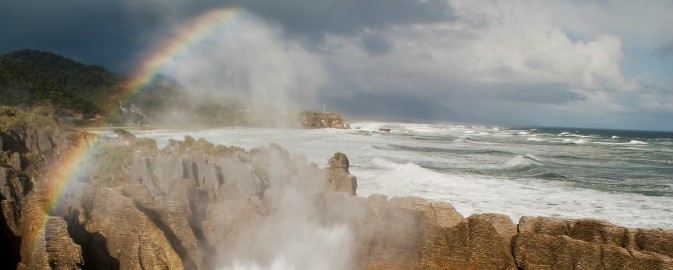Sea Spray
The major contributor to metal corrosion in New Zealand is sea spray. Seaspray contains a mixture of salts consisting of 2.5 to 4% sodium chloride and small quantities of magnesium, calcium and potassium chloride. These salts make water far more electrically conductive and, therefore, will cause more corrosion.
Seaspray, evaporation, and infrequent rain increase salt concentrations on exterior surfaces, particularly when it accumulates in unwashed areas.
Airborne Salt from Sea Spray.
The distance airborne salt is carried inland varies significantly with local wind patterns. Salt deposits have been measured as far inland as Lake Taupo in the North Island. Geographic or man-made obstructions, such as trees or buildings, slow air velocity and allow the air to discharge some of its salt burden, which can make the environment less aggressive. Conversely, where there are few impediments to the free flow of air, severe marine influence can extend well inland.
In high humidity levels, or when wetted by condensation, marine salts absorb water and form a chloride solution. Therefore, the effect of salt spray is greatest in unwashed areas, where salts can accumulate over time.
Where the ends of roof cladding are exposed to contaminants such as sea salt or industrial pollutants, it is good practice to provide an over-flashing which discharges into the gutter or spouting. (See Over Flashing.)
- It gives a measure of protection to the underside of the roof cladding and the underlay.
- It provides support for the roofing underlay which is subject to damage from wind and UV.
- When using PVC spouting, there is a gap between the spouting and the fascia caused by the thickness of the brackets. In coastal locations where the ends of roof cladding are exposed, this unwashed area becomes susceptible to corrosion. A gutter apron can minimise this risk.
- If there is no spouting or it has a low front.
- In severe environments, wind can drive contaminants up the ribs of exposed ends of roof cladding. Metal scriber flashings or filler blocks can be used to prevent or inhibit ventilation.
The over-flashing should extend 50 mm into the gutter, and the underlay finishes on the down-slope of the flashing. If there is no over-flashing to the gutter, the underlay should be extended into the gutter by a minimum of 20 mm.
In some cases, the over-flashing becomes a sacrificial flashing which can extend the life of the cladding. In such circumstances, the COP recommends making the flashing from aluminium.
- Log in to post comments

